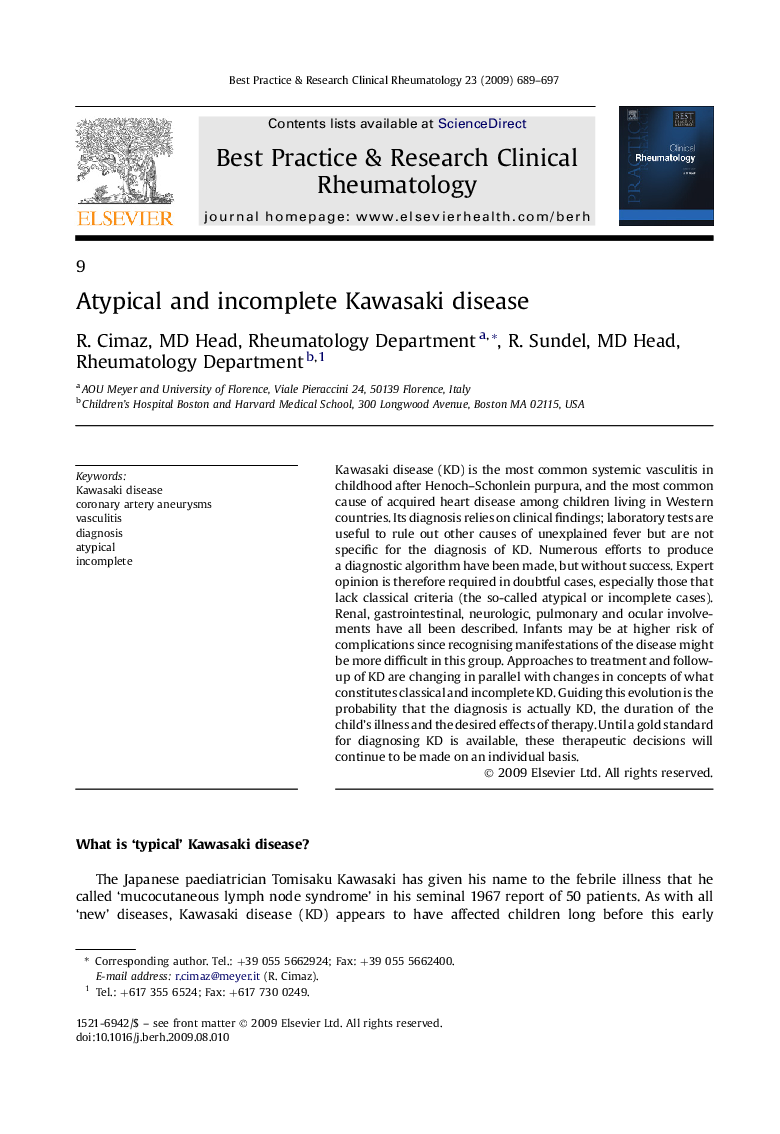| Article ID | Journal | Published Year | Pages | File Type |
|---|---|---|---|---|
| 3343536 | Best Practice & Research Clinical Rheumatology | 2009 | 9 Pages |
Kawasaki disease (KD) is the most common systemic vasculitis in childhood after Henoch–Schonlein purpura, and the most common cause of acquired heart disease among children living in Western countries. Its diagnosis relies on clinical findings; laboratory tests are useful to rule out other causes of unexplained fever but are not specific for the diagnosis of KD. Numerous efforts to produce a diagnostic algorithm have been made, but without success. Expert opinion is therefore required in doubtful cases, especially those that lack classical criteria (the so-called atypical or incomplete cases). Renal, gastrointestinal, neurologic, pulmonary and ocular involvements have all been described. Infants may be at higher risk of complications since recognising manifestations of the disease might be more difficult in this group. Approaches to treatment and follow-up of KD are changing in parallel with changes in concepts of what constitutes classical and incomplete KD. Guiding this evolution is the probability that the diagnosis is actually KD, the duration of the child's illness and the desired effects of therapy. Until a gold standard for diagnosing KD is available, these therapeutic decisions will continue to be made on an individual basis.
